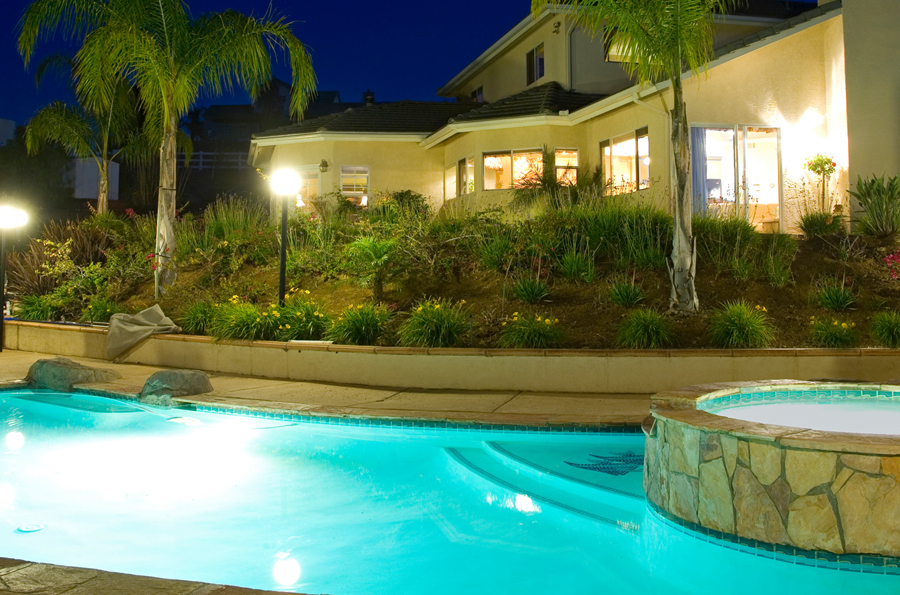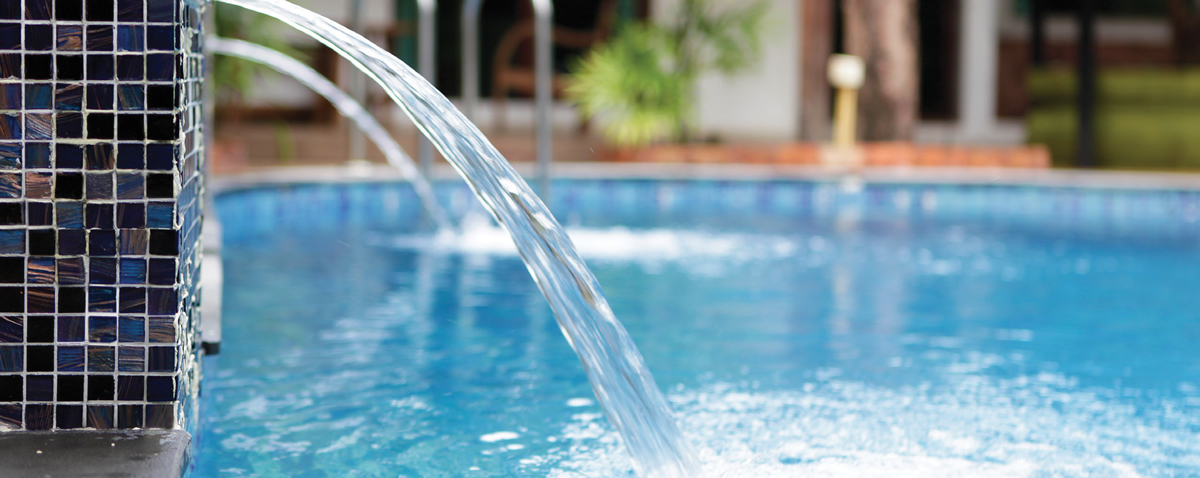You may know the daily, weekly, monthly, and annual pool maintenance schedules backwards and forwards. But what steps do you take on the 10th anniversary of a pool?
Even if the owner has scrupulously observed best practice in-season and off-season over the years, pools do wear out.
Some signs of fatigue are obvious. A cracked deck. A faded liner. A missing tile or two. Water chemistry that’s harder and harder to maintain.
What about less obvious signs of tired pool syndrome? A pool’s 10th anniversary is a good time for a comprehensive safety and performance inspection. The owner will enjoy the pool updates today while avoiding the trouble of unexpected maintenance, should the home one day go on the market and need to be brought up to code.
Signs of tired pool syndrome:

- A cluttered, disorganized pool pad marked by a needlessly clumsy array of pool components.
- The use of high-voltage (read: high energy cost and frequent replacement) incandescent lights instead of low-voltage, long-life LED lights. A single 300-watt pool light burning 2.5 amps per hour at 120 volts is a substantial energy expense.
- A junction box that doesn’t recognize low-voltage hardware, especially today’s LED lighting systems.
- No “wow factor” such as a modern, aesthetically-pleasing water feature or two. Where is the spa? Laminar jets? Bubblers? Deck jets?
- Reliance on a dated heater. Today’s heaters are far more efficient than they were 10 years ago.
- Manual freeze protection control that forces the owner to make back and forth treks on cold nights instead of automated freeze protection.
- Trusting an outdated (or non-existent) surge suppressor to safeguard costly pool system hardware when an updated surge protector better protects the homeowner’s investment and minimizes frustrating pool downtime.
One person who has seen the unintended consequences of delayed pool systems updates is Jon Payne, zone manager for Intermatic, a leading manufacturer of pool and spa controls.
“The pool owner is ultimately in charge of his backyard investment,” Payne says. “Pool owners have an opportunity to upgrade their pool with modern components and controls, which ultimately means savings in time, money, and inconvenience. A pool built 10 years ago probably isn’t equipped with the money-saving technology new pool owners today take for granted.”

Payne suggests pool service and maintenance professionals consider updating with proven, high-efficiency technology like the ReadySet™ Electronic Valve Actuator for water features and the COMBOConnect™ Junction Box Transformer for low-voltage lighting applications.
At first examination, the space-saving COMBOConnect Junction Box Transformer appears a natural remedy for cluttered pool pads. The hybrid solution requires 20-30 percent less space than traditional, separately-installed components while delivering much-needed low-voltage lighting support.

Similarly, the quick-to-install ReadySet Electronic Valve Actuator is just what the doctor ordered when adding water features to liven up a 10-year refresh project. By eliminating one of the most dreaded aspects of valve actuator setup – manually adjusting actuator cams – ReadySet makes it easy for pool service professionals to save 20 minutes or more during every installation.
Be proactive with owners of aging pools. Solving tired pool syndrome represents a double benefit of more efficiency, convenience, and value for the owner and more high-value project opportunities for you.
Learn more about how to simplify and modernize older pool systems.


